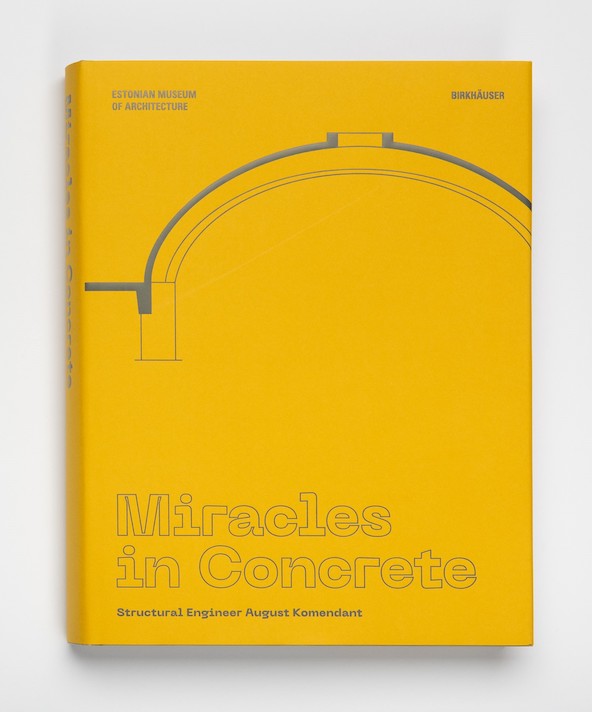Miracles in Concrete. Structural Engineer August Komendant is the first comprehensive assessment of the legacy of structural engineer August Komendant (1906–1992). The book, in conjunction with an exhibition of the same name—first exhibited at the Estonian Museum of Architecture from January 10 through July 26, 2020—provides an overview of Komendant’s long career spanning from the 1930s to the 1980s. Komendant’s portfolio contains more than 200 projects—some of which he designed independently, others in collaboration with architects and fellow engineers. The most significant of these projects are presented in the book. The book also features the voices of some of Komendant’s contemporaries and loved ones. The interviews conducted during the research help to understand the background of the projects and paint a portrait of August Komendant as a person.
The book contains essays by renowned architectural historian Professor Kenneth Frampton and the editor of the book Carl-Dag Lige, as well as selected articles by August Komendant. The only known in-depth interview with August Komendant—a conversation with architect Oscar Tenreiro in 1985—is published here for the first time in English. The book also provides a visually rich overview of August Komendant’s most important works during his career as a structural engineer—from the early concrete structures in his native Estonia in the 1930s to the masterpieces of world architecture in North America in the 1960s and 1970s. A majority of the 500 illustrations are published for the first time. The final section of the book includes a comprehensive list of August Komendant’s works, including the key details of each project, and a selected bibliography, which includes both Komendant’s own publications and writings by others on his work.
August Komendant (1906–1992) was an Estonian-American structural engineer whose collaboration with famous architects and engineers resulted in several twentieth-century architectural masterpieces. His professional career spanned more than half a century from the 1930s to the 1980s and coincided with an era characterized by modernization, urbanization, and the rapid development of technology. Komendant’s beliefs were firmly based on knowledge complemented by a refined sense of aesthetics. As an engineer, he valued Architecture with a capital A—its timeless dimensions and lasting quality. He knew that miracles need more than spreadsheets and a budget—a creative impulse is vital. Concrete, a material that many consider to be bleak, cold, and dull, was Komendant’s passion through the decades. He used his expertise in designing structures as different as the Kadriorg Stadium grandstand in Tallinn, Estonia (architect: Elmar Lohk, 1938), the Habitat ’67 experimental housing complex in Montreal, Canada (Moshe Safdie, 1967) and the Kimbell Art Museum in Fort Worth, Texas, USA (Louis I. Kahn, 1972).
Publishers: Birkhäuser Verlag and the Estonian Museum of Architecture
Edited by: Carl-Dag Lige, Estonian Museum of Architecture
Layout, cover design, typesetting and color correction: Marje and Martin Eelma, Tuumik Stuudio
Translation from Estonian into English: Refiner Translations (Aksel Haagensen, Margus Elings), from Spanish into English: David Gouverneur, Oscar Tenreiro
Copy-Editing: Juta Ristsoo, Refiner Translations (Michael Haagensen, Wendy Smith)
Consulting engineer: Tiit Masso
Project management: Freya Mohr
Printing: Printon AS, Tallinn, Estonia
Basel & Tallinn 2022
432 pages, 500 illustrations
ISBN 978-3-0356-2512-7
Price: 35 euros.



